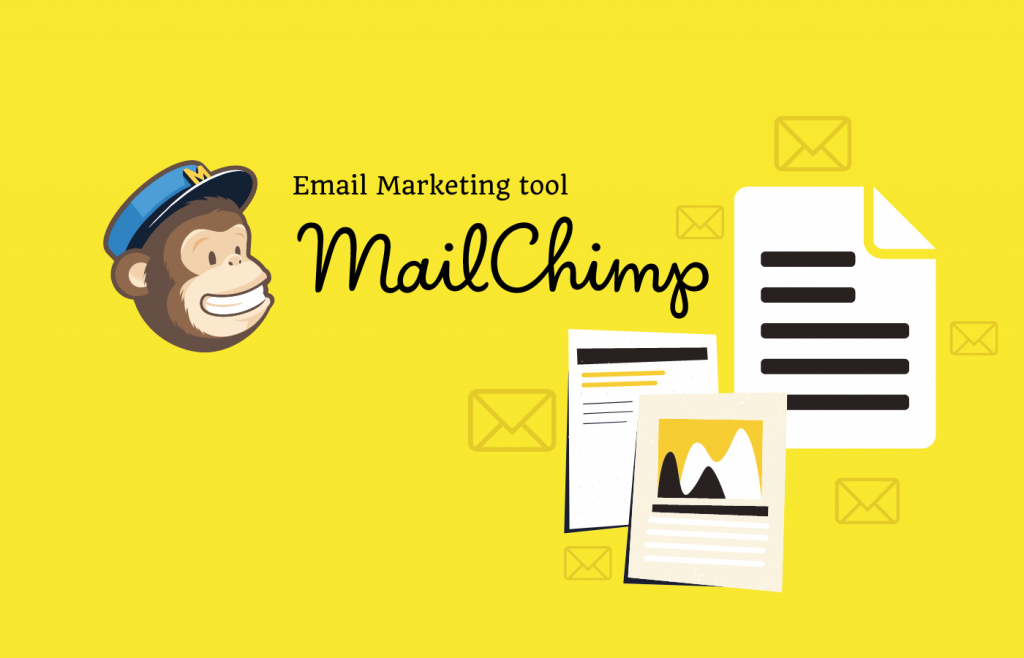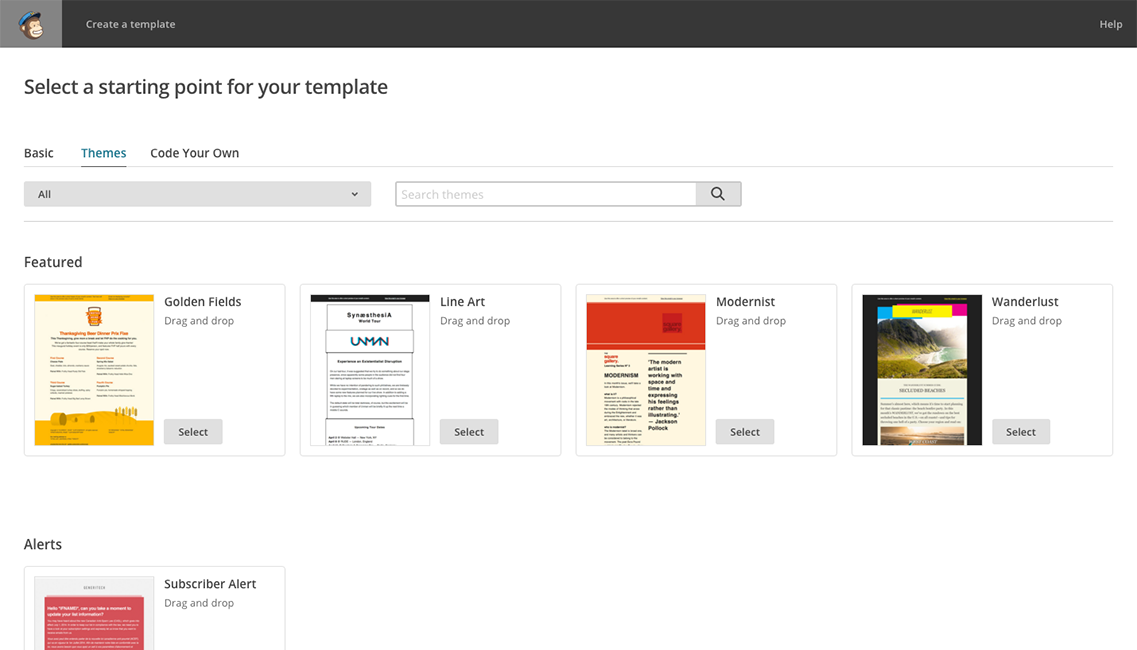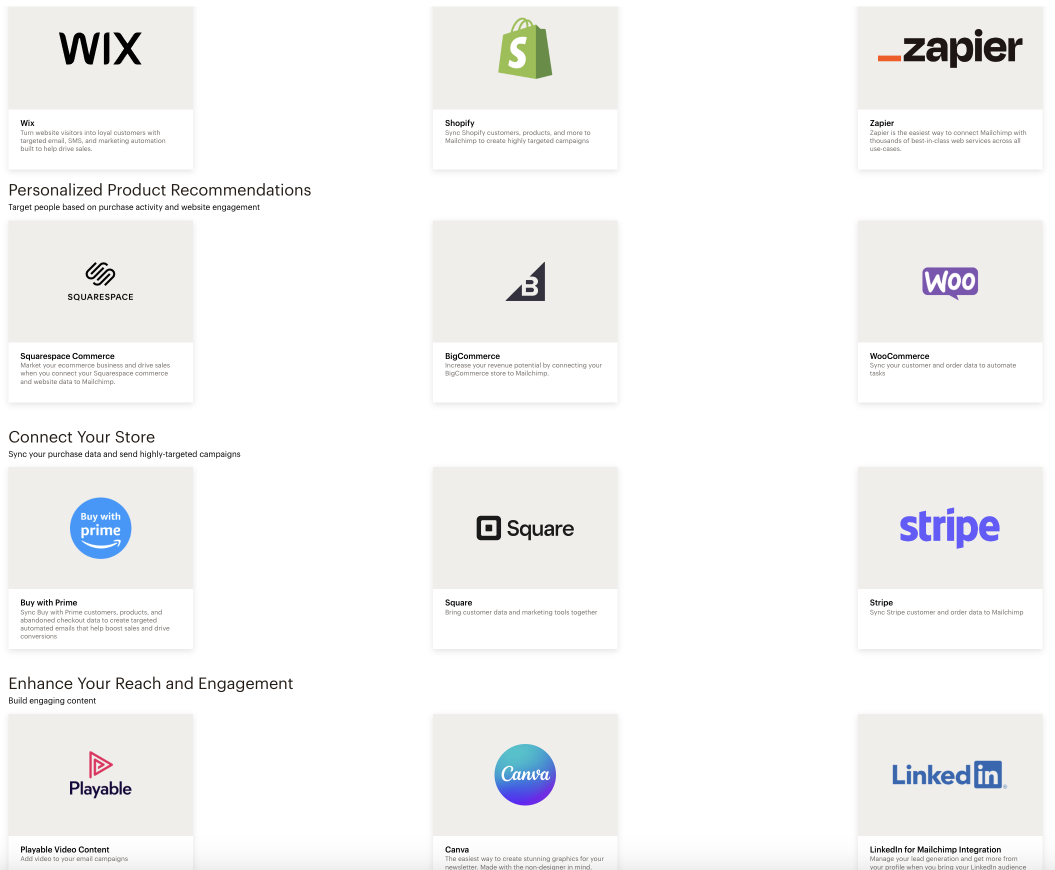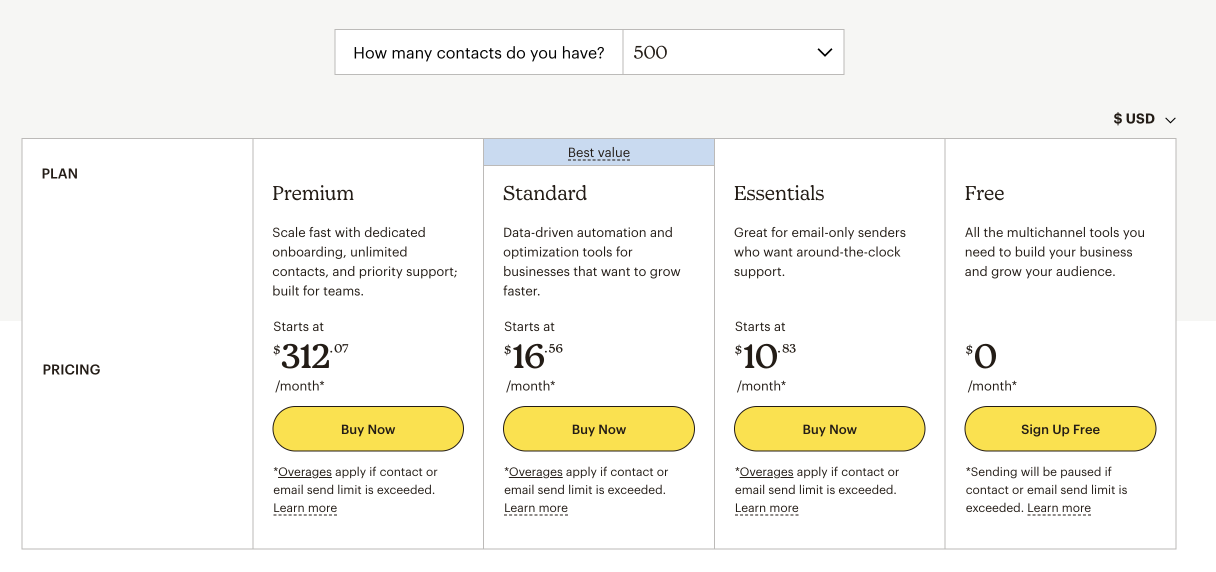
OUTSTANDING FEATURES
** Pros:
_Free up to 500 contacts and 1000 sends per month
_Easy to use with drop and drag interface
_Strong customer support
_Compatible with many 3rd party application & services
_Many functions including template design & analysis
** Cons:
_Expensive for large contact list
_Takes time to learn advanced features
In the ever-evolving digital landscape, email marketing remains a cornerstone for businesses to reach and engage with their audience. Among the myriad of email marketing platforms available, Mailchimp stands out as one of the most popular and widely used tools. Founded in 2001, Mailchimp has grown from a small side project into a comprehensive marketing platform, offering a suite of tools to help businesses of all sizes create, manage, and analyze their email marketing campaigns.
History of Its Foundation
Mailchimp’s journey began in 2001, when it was founded by Ben Chestnut and Dan Kurzius. Originally, Chestnut and Kurzius were running a web design agency called The Rocket Science Group. During this time, they noticed a growing demand from their clients for an easy-to-use email marketing tool. Email marketing was a cumbersome task back then, requiring significant technical expertise and resources. Recognizing this gap in the market, Chestnut and Kurzius decided to create a solution.
Mailchimp was initially conceived as a side project, a small, automated email marketing service that the duo could offer to their web design clients. They named it after a popular character from one of their earlier projects, a playful chimp mascot named “Freddie”. The lighthearted name and mascot were chosen to make the brand approachable and friendly, contrasting with the often intimidating tech world.
The initial version of Mailchimp was launched as a paid service, targeting small businesses that needed an affordable and accessible email marketing solution. Over the years, the platform evolved, incorporating user feedback and adding new features. Mailchimp’s user-centric approach and focus on simplicity resonated with its audience, leading to steady growth.

In 2009, Mailchimp introduced its freemium model, offering a free tier that allowed users to send up to 12,000 emails per month to a list of up to 2,000 subscribers. This strategic move significantly boosted Mailchimp’s user base, making it one of the most popular email marketing services in the world. The freemium model lowered the barrier to entry for small businesses and startups, allowing them to experience the benefits of email marketing without an upfront cost.
Mailchimp’s continued innovation and expansion into areas such as marketing automation, e-commerce integrations, and analytics have solidified its position as a leader in the digital marketing space. Today, Mailchimp serves millions of users worldwide, from small businesses to large enterprises, helping them effectively communicate with their audience and grow their businesses.
Features
Email Campaign Creation
Mailchimp offers a user-friendly drag-and-drop editor, making it easy to create visually appealing email campaigns. Users can choose from a variety of pre-designed templates or customize their own, ensuring that emails align with their brand identity.

Audience Management
Mailchimp provides robust audience management tools, allowing users to segment their audience based on various criteria such as demographics, behavior, and engagement levels. This enables more targeted and personalized email campaigns, improving open and conversion rates.
Automation
With Mailchimp’s automation features, users can set up automated email sequences for different scenarios, such as welcome emails for new subscribers, abandoned cart reminders for e-commerce stores, and re-engagement campaigns for inactive contacts. Automation helps save time and ensures consistent communication with the audience.
Analytics and Reporting
Mailchimp offers comprehensive analytics and reporting tools to track the performance of email campaigns. Users can monitor open rates, click-through rates, bounce rates, and other key metrics. The platform also provides insights into subscriber behavior and engagement, helping businesses make data-driven decisions.

Integration with Other Platforms
Mailchimp integrates seamlessly with various third-party platforms, including e-commerce platforms like Shopify and WooCommerce, CRM systems like Salesforce, and social media platforms like Facebook and Instagram. This integration capability enhances the functionality of Mailchimp and allows for a more cohesive marketing strategy.

Landing Pages and Forms
In addition to email marketing, Mailchimp also offers tools to create landing pages and sign-up forms. These tools help businesses capture leads and grow their subscriber lists effectively.
Pricing
Mailchimp offers a generous free plan to starter having up to 500 contacts and 1000 sends per month. If you have more emails to reach, paid plan starts from about 11$.
Subscribed, unsubscribed, and non-subscribed contacts are included in your contact count. Your maximum contact count affects the price of your plan.
Please note that there is additional charges applied if contacts and sends exceed limit of chosen plan.

Conclusion
Mailchimp remains a powerful and versatile email marketing platform, offering a wide range of features to help businesses connect with their audience. Its ease of use, comprehensive free plan, and robust analytics make it an attractive choice for marketers. However, businesses should be aware of the potential costs associated with larger contact lists and the complexity of advanced features. By carefully considering their needs and budget, businesses can leverage Mailchimp to create effective email marketing campaigns and drive growth.



